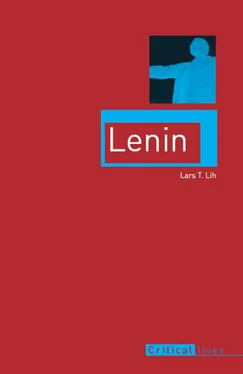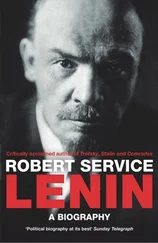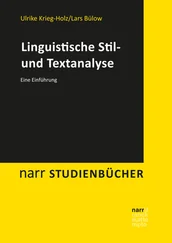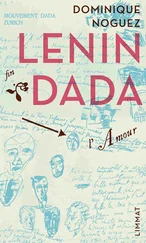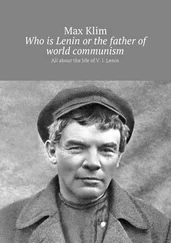Lars Lih - Lenin
Здесь есть возможность читать онлайн «Lars Lih - Lenin» весь текст электронной книги совершенно бесплатно (целиком полную версию без сокращений). В некоторых случаях можно слушать аудио, скачать через торрент в формате fb2 и присутствует краткое содержание. Город: London, Год выпуска: 2012, ISBN: 2012, Издательство: Reaktion Books, Жанр: Биографии и Мемуары, История, на английском языке. Описание произведения, (предисловие) а так же отзывы посетителей доступны на портале библиотеки ЛибКат.
- Название:Lenin
- Автор:
- Издательство:Reaktion Books
- Жанр:
- Год:2012
- Город:London
- ISBN:9781780230030
- Рейтинг книги:3 / 5. Голосов: 1
-
Избранное:Добавить в избранное
- Отзывы:
-
Ваша оценка:
- 60
- 1
- 2
- 3
- 4
- 5
Lenin: краткое содержание, описание и аннотация
Предлагаем к чтению аннотацию, описание, краткое содержание или предисловие (зависит от того, что написал сам автор книги «Lenin»). Если вы не нашли необходимую информацию о книге — напишите в комментариях, мы постараемся отыскать её.
Lenin — читать онлайн бесплатно полную книгу (весь текст) целиком
Ниже представлен текст книги, разбитый по страницам. Система сохранения места последней прочитанной страницы, позволяет с удобством читать онлайн бесплатно книгу «Lenin», без необходимости каждый раз заново искать на чём Вы остановились. Поставьте закладку, и сможете в любой момент перейти на страницу, на которой закончили чтение.
Интервал:
Закладка:
Alas, the mismatch between scenario and reality could not long be ignored and Lenin was again forced to adjust. Before 1919 Lenin focused on the polar extremes within the peasantry: the rural poor ( bednota ) versus the kulak. In 1919 the official focus moved toward the centre of the spectrum: the mass of the peasantry that had not yet been polarized. More and more, steps toward socialism depended on enticing the middle peasant – the peasant as peasant – to follow the lead of the proletariat. Accordingly, Lenin’s adjustments can be followed in a series of parallel processes: disillusion with the leadership qualities of the rural poor, soft-pedalling the conflict with the kulak and searching for ways to convince the middle peasant of the virtues of socialism.
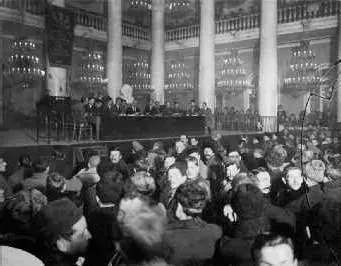
In Lenin’s original scenario the rural poor were assigned a specific mission: to spearhead the transition from small-scale individual production to large-scale collective production. Impelled by the economic breakdown caused by the war, the poorest peasants would realize the impossibility of farming in the old ways. They would pool together their land to form communes ( kommuny ) or take over landowner estates and run them as ‘state farms’ ( sovkhozy ). These collective enterprises would reveal the advantages of socialism to the rest of the peasantry, and voilà! slow but steady and perceptible progress down the path to socialist transformation of the countryside. Such was Lenin’s vision.
The only problem – as Lenin realized with growing dismay – was that the actual communes and state farms were negative examples that pushed the peasantry away from socialism. From early 1919 on we have a ceaseless litany of complaints that only increase in volume and bitterness. Lenin’s vitriol on this issue stemmed from his enormous emotional investment in his original scenario.
April 1919: ‘The peasants say: long live the Soviet vlast , long live the Bolsheviks, but down with kommuniia ! They curse the kommuniia when it is organized in a stupid way and forced upon them. They are suspicious of everything that is imposed upon them, and quite rightly so. We must go to the middle peasants, we must help them, teach them, but only in the field of science and socialism. In the area of farm management we must learn from them.’ 29
December 1919: ‘the communes have only succeeded in provoking a negative attitude among the peasantry, and the word “commune” has even at times become a slogan in the fight against communism’. 30
December 1920: Lenin states derisively that collectively organized farms were in such pathetic condition that they were justifiably termed almshouses. 31
March 1921: ‘The experience of this collective farming shows us only an example of how not to farm: the surrounding peasants laugh or are filled with indignation.’ 32
Parallel to Lenin’s progressive disillusionment with the rural poor as class leaders is a definite soft-pedalling of the frenetic anti-kulak rhetoric of 1918. In 1919 he emphasized the distinction between the kulak and the bourgeoisie in general: kulak resistance would be crushed but kulaks would not be expropriated like urban capitalists. 33Later in the year he noted with some wonderment that the pitiless logic of ‘ ili-ili ’ – either the dictatorship of the workers or the dictatorship of the landowners – meant that kulaks in Siberia supported soviet power against Admiral Kolchak (the ‘supreme leader’ of the anti-Bolshevik White movement). In December 1920 an irritated Lenin told Bolshevik questioners that the Central Committee had unanimously agreed that ‘we got carried away with the struggle against the kulak and lost all sense of measure’. By this time, in fact, the Bolsheviks were openly relying on the economic exertions of the kulak, although he had been rechristened for this purpose as ‘the industrious owner’. 34
As we see, Lenin had abandoned his original ‘class war in the villages’ scenario long before the introduction of NEP in early 1921. In its place arose a scenario whose protagonist was the previous walk-on role of the middle peasant. An official ‘shift to the middle peasant’ was inaugurated with much fanfare in early 1919. According to émigré economist Leo Pasvolsky, the open letters to the peasants written by Lenin and Trotsky, the various official decrees, and ‘the dozens of articles that were devoted to the subject in the whole Soviet press for weeks after that… constitute the most elaborate scheme of agitation ever used for any one purpose by the Soviet regime’. 35The peasants were quick to grasp that the soviet power was seeking a new base of social support and that the bednota (the poor peasants) were no longer unchallenged masters in the villages. Despite the prominence of this campaign at the time, it has disappeared from the present-day historian’s horizon, because it does not fit into prevailing stereotypes about Bolshevism during the civil war.
Gradually Lenin worked out a new and more ambitious scenario: enlist the middle peasant directly into the socialist cause. But how? What could convince the middle peasant of the advantages of socialism? Existing models of collective agricultural production – the kommuny and state farms run by poor peasants – were embarrassing failures. Furthermore, the use of violence to transform production relations was a non-option. This point needs to be brought out, precisely because there was a lot of state violence against the peasantry during the civil war, both to extract needed resources and to crush peasant rebels. But these traditional forms of state violence were sharply distinguished in Lenin’s mind – and no doubt in peasant consciousness as well – from violence used to transform production methods. From a Marxist point of view coercing people to adopt a higher form of production was not so much wrong as absurd.
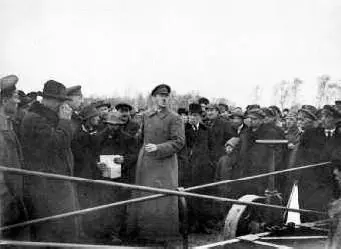
As he watched his hopes for state farms and kommuny crumble Lenin only became more insistent on the inadmissibility of using force – a fundamental contrast with Stalin. Precisely in 1919, at the height of the civil war, we find Lenin’s most emphatic pronouncements on this subject. ‘Before anything else, we must base ourselves on this truth: violent methods will achieve nothing here, due to the very essence of the matter… There is nothing more stupid than the very idea of violence in the area of property relations of the middle peasantry .’ 36‘The absurdity of [any use of violence to install kommuny ] is so obvious that the Soviet government long ago forbade it’. Soon ‘the last trace of this outrage [ bezobrazie ] will be swept from the face of the Soviet Republic’. 37
Lenin finally decided that the advantages of socialism would be demonstrated to the middle peasants, not directly by collective experiments within the village, but indirectly. Instead of propagating ‘oases of collective production’ in the petty-bourgeois desert, the new path to socialist transformation in the countryside would rely on the transforming power of socialist industry. In January 1920, at the height of his disillusionment with sovkhozy and kommuny , Lenin read an article by the Bolshevik engineer Gleb Krzhizhanovsky on the vast potential of Russia’s electrification. Lenin himself was electrified: here was a way out of his dilemma. For him, the plan for electrification represented ‘a second party program’ (symbolically taking the place of the aborted ‘second October’). This new peasant strategy is the inner meaning of Lenin’s famous slogan from late 1920: ‘Communism is soviet power plus electrification of the whole country.’ 38
Читать дальшеИнтервал:
Закладка:
Похожие книги на «Lenin»
Представляем Вашему вниманию похожие книги на «Lenin» списком для выбора. Мы отобрали схожую по названию и смыслу литературу в надежде предоставить читателям больше вариантов отыскать новые, интересные, ещё непрочитанные произведения.
Обсуждение, отзывы о книге «Lenin» и просто собственные мнения читателей. Оставьте ваши комментарии, напишите, что Вы думаете о произведении, его смысле или главных героях. Укажите что конкретно понравилось, а что нет, и почему Вы так считаете.
